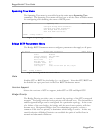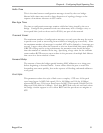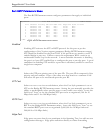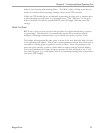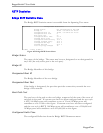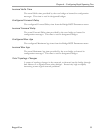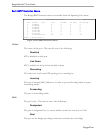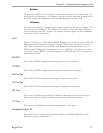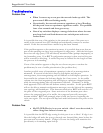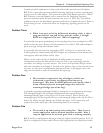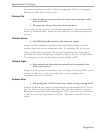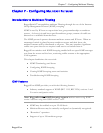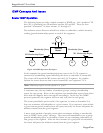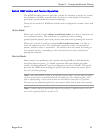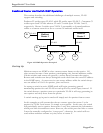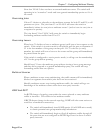
RuggedSwitch™ User Guide
Troubleshooting
Problem One
• When I connect up a new port the network locks up solid. The
port status LEDs are flashing madly.
• Occasionally, the network seems to experience a lot of flooding.
All the ports seem to experience significant traffic. The problem
lasts a few seconds and then goes away.
• One of my switches displays a strange behaviour where the root
port hops back and forth between two switch ports and never
settles down.
Is it possible that one of the switches in the network or one of the ports on a
switch in the network have STP disabled and accidentally connects to another
switch? If this has occurred then a traffic loop has been formed.
If the problem appears to be transient in nature, it is possible that ports that are
part of the spanning tree have been configured as edge ports. After the link layers
have risen on edge ports, STP will directly transition them (perhaps improperly) to
the forwarding state. If an RSTP configuration message is then received the port
will be returned to blocking. A traffic loop may be formed for the length of time
the port was in forwarding.
If one of the switches appears to flap the root from one port to another the
problem may be one of traffic prioritization (See problem five).
Another possible cause of intermittent operation is that of an autonegotiation
mismatch. If one end of the link is fixed to full duplex and the peer
autonegotiates, the autonegotiating end will fallback to half-duplex operation. At
lower traffic the volumes the link may display few if any errors. As the traffic
volume rises the fixed negotiation side will begin to experience dropped packets
while the autonegotiating side will experience collisions. Ultimately, as traffic
loads approach 100% the link will become entirely unusable. At this point RSTP
will not be able to transmit configuration messages over the link and the spanning
tree topology will breakdown. If an alternate trunk exists RSTP will activate it in
the place of the congested port. Since activation of the alternate port often
relieves the congested port of its traffic, the congested port will once again
become reliable. RSTP will promptly enter it back into service, beginning the
cycle once again. The root port will flap back and forth between two ports on the
switch.
Problem Two
• My PC/IED/Device is on your switch. After I reset the switch, it
takes a long time before it comes up.
Is it possible that the RSTP edge setting for this port is set to false? If edge is set
false the bridge will make the port go through two forward delay times before the
port can send or receive frames. If edge is set true the bridge will transition the
port directly to forwarding upon link up.
RuggedCom



